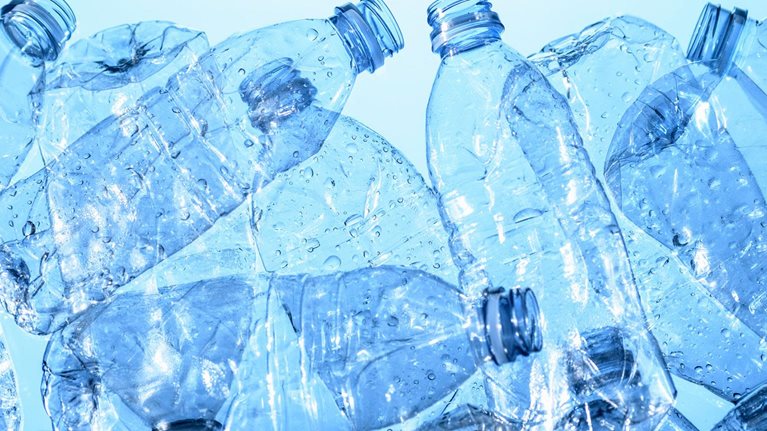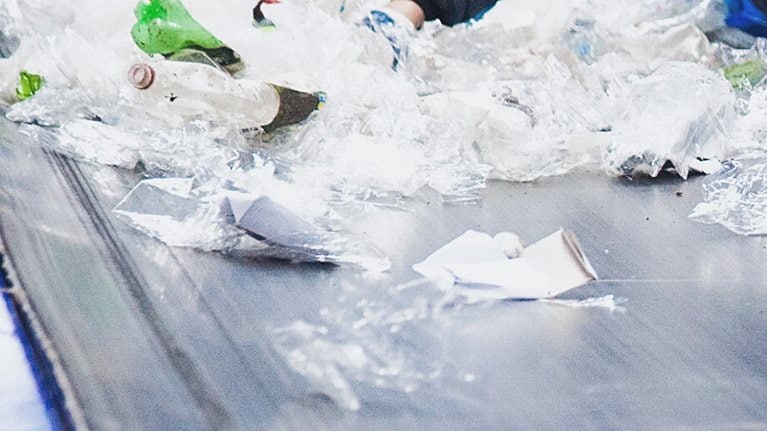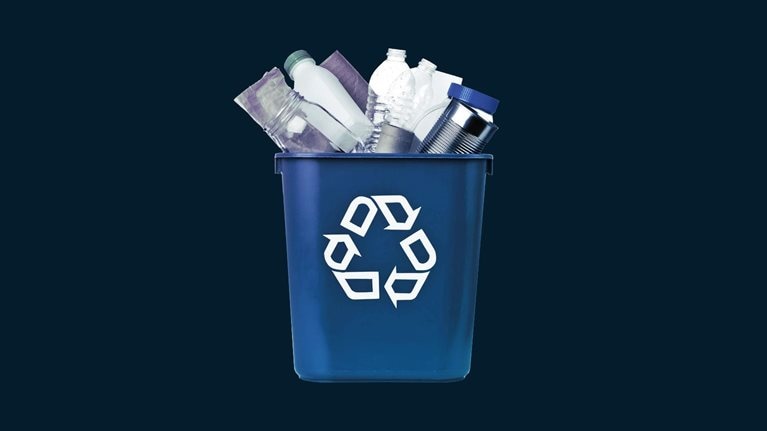The worldwide crisis of plastics-waste pollution is leading to calls for action from a wide range of stakeholders, from consumers to regulators to brand owners to plastics producers. The desire to see action is easy to understand, but identifying the most effective approaches to current waste problems—and those of the future—represents a complex challenge spanning the entire plastics value chain.
The elements that could provide the foundations of a successful recycling system—a circular economy for plastics—are well recognized. The first is to design or redesign plastic products to be recyclable. Next is putting in place effective systems to recover end-of-life plastics. The third element is to reuse the recovered plastics by recycling them, turning them into new products that will create value. Our recent research has shown substantial value-creation potential in capturing plastic waste and using existing technologies to process it to make new plastics and other chemicals. To date, however, investments to translate this potential into reality have been relatively small. Globally, only around 15 percent of plastics produced each year get recycled.
What explains that paradox? The contributing factors to the plastics-waste problem are complex and include issues ranging from consumer choice to food-supply safety to entrenched manufacturing systems. Not least is plastics’ seemingly inexhaustible potential to meet consumer demands more cost effectively than other materials, especially in packaging. This has fueled plastics’ strong growth trajectory, averaging 6 percent per year since 1965. But it has also allowed the use of plastics to get well ahead of society’s ability to handle waste-plastic volumes, despite the clear potential for economically viable ways to reuse the material.
The need for a way to sort through the options
This is not the kind of challenge that will be solved with a single stroke. A wide range of approaches tailored to the recycling needs of different plastics, applications, and regional waste-management systems will be necessary. And while plastics waste has become a particularly acute environmental problem in geographies where waste is largely unmanaged, our research shows that implementing these approaches in developed markets has the potential to improve recycling rates there too.
But the large number of possible approaches—and the difficulty in evaluating the options—is likely contributing to the slow progress. It’s been challenging to identify what would make a circular economy for plastics economically feasible, not least because of the different economics of recycled plastics and virgin resins. Nor has there been a fully integrated value-creation assessment of these elements across each of the thousands of different resins, applications, and geographical combinations.
Our research shows that the current fragmentation of the value chain and the regional nature of waste-management systems represent a further barrier to progress. This is holding back dialogue among potential value-chain partners about what needs to be fixed to speed the development of a circular economy for plastics and about trying out different approaches to achieve higher-value-creating outcomes. Uncertainty continues about future regulations—for example, CO₂ taxation—while overly simplistic proposals for solving the plastics-waste problem continue to circulate, confusing the issue even further.
Building a granular and integrated understanding of the challenge
In response to these challenges, we have developed the first fact-based economic-feasibility perspective on the potential for recovery and reuse across the full plastics value chain.1
As part of our research, we investigated more than 1,000 combinations of used resins, applications, and geographies to estimate the costs of recovery and reuse for each. These have been incorporated into our Plastics Recovery and Reuse model. The analysis is based on current “as is” economics to provide a sound basis for capital-investment decisions (see sidebar, “Understanding the Plastics Recovery and Reuse model”).
The model reflects nearly all the complexity of the plastics-waste universe and identifies the approaches that will create the most value. How the recycling economics compare for resins in different applications and in different geographies can be shown in a cost curve (Exhibit 1).2

An important capability of the model is that it can provide guidance on future steps. For example, by making transparent the value-creating potential of the many different combinations of resin, application, recovery systems, and geography, this analysis can help guide policy makers as they develop regulation to encourage plastics reuse.
At the same time, players across the value chain will likely benefit from moving up the learning curve as the plastics-recycling industry gains momentum—and as plastics-recycling systems and their costs evolve. The model has therefore been designed to have a high degree of flexibility so it can incorporate a range of target costs, as well as assumptions about how debottlenecking and efficiencies derived from continuous operational improvements could reduce costs. It can also be used to help reimagine process flows and work with a range of unit costs to inform decisions on future investments best.
These kinds of capabilities should help facilitate the new discussions that value-chain partners need to have about how they could adjust requirements and specifications to improve the economic feasibility of different segments of plastics recovery and reuse activity—and help get past the fragmentation and lack of dialogue that holds back the industry now.
Showing how the recovery and reuse options compare
If we add in capital costs as well as operating costs, our analysis shows that, at an oil price of $60 per barrel, only a limited number of plastics-recycling opportunities are currently value creating in themselves. We define “value-creating opportunities” as those that provide a positive return on the capital invested in all three elements (collection, handling, and processing) at a level sufficient to satisfy what private investors typically seek. These kinds of value-creating initiatives account for only around 20 percent of volumes (Exhibit 2). The analysis also suggests that, for many combinations, the initial capital investment required creates a major disincentive to potential investors.

The majority of plastics-recycling activities are in the middle, where recovery and reuse generate positive earnings before interest, taxes, depreciation, and amortization but do not create value. This category accounts for around 50 percent of cases. Investors are in effect showing good sense by not investing yet in these plastics-recycling initiatives.
The final category—around 30 percent of volumes—consists of a range of resins and applications that do not offer attractive economics for recycling or reuse under most market conditions. This is because of factors such as that the capture of the used materials and their reprocessing are prohibitively expensive.
What can be done to improve these applications’ recycling economics? Combining the efforts of the recycling and petrochemical industries is still at an early stage on the learning curve, and simply gaining scale could significantly improve the overall economics.
More cost-effective collection systems could help, and there could be scope to redesign products in this category to improve their recyclability—for example, through making them out of different resins when possible. But there are also applications for which the cost incurred in recycling, with no possibility of earning a profitable return, could be deemed acceptable because the plastic used there simply does the most economical, as well as the most carbon-efficient, job. The model can make these additional factors transparent and include them in the integrated economics.
Identifying the major hurdles to progress and ways to overcome them
The Plastics Recovery and Reuse model can be used in a number of ways, including assessments of economic viability on regional, resin, and application bases. It can also identify the main bottlenecks to economically feasible recovery and reuse, such as a lack of economically attractive recycling capacity. The model is flexible; it can accommodate a wide variety of real-world situations—for example, an analysis of municipal-waste streams with a broad mix of resins and applications. In this way, it can provide a detailed and powerful approach to understanding the status quo and to simulating future scenarios, such as the removal of specific resins or applications.
For investors within the value chain or infrastructure investors, the model can show how different oil-price scenarios and petrochemical-cycle phases are likely to affect the economics of plastics reuse and recycling so that ventures can be made resilient to shifts in economic conditions. For regulators, the cost curve can help guide policy decisions that improve the economic feasibility of plastics-recovery and-reuse systems across municipalities, regions, and countries.
Resolving the plastics-waste problem is a complex challenge that will require choosing from the large number of possible approaches and tailoring them to the recycling needs of different plastics, applications, and regional waste management systems. But despite evidence that recovering and reusing plastics waste could generate substantial value, investments have been held back by a lack of clarity about the economic feasibility of the various approaches. Bringing an economic-feasibility lens to bear on the possible approaches can guide choices about which moves to prioritize, opening the way to investments that can help resolve the challenge worldwide.



